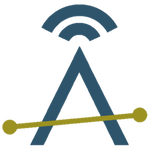Frankly, we at Ankota don't love describing our value as being a home care scheduling software company. Yes it's true that we are pioneering the future of scheduling for home care with innovations like the following:
- Planning all known visits ahead of time, so when a new client calls your agency, you can offer them appointments when you're already in the neighborhood
- Routing home care workers from their homes, to cut down on driving
- Providing episode planning with best practice "Protocols of Care"
It's also true that if the industry broadly adopted the products Ankota has today, we can save 1 billion miles of driving per year in the US and enable the existing home care work force to see 20% more patients. This is exciting, but this is just the beginning and not the future of home care scheduling software.
The near future, or at least the next challenge in Home Care Scheduling is to provide better coordination of care across disciplines, and we've expanded our "treatment planning" capabilities to support this. For example, let's think through a typical chemotherapy home infusion application. Generally, home chemotherapy starts at a chemo clinic where a patient meets with doctors and pharmacists to receive their initial dosing while under monitoring. The home infusion nurse needs to meet the patient at the clinic, and either needs to bring (or more likely have dropped off ahead of time) the infusion pump and supplies for home dosing. Then the subsequent visits are at the patient's home, but again require the coordination of supply and pharma delivery before the nurse arrives. Ankota can now handle this scheduling and the gotchas that go with it, like putting the deliveries on hold until the pharmacists get their work done. This is exciting, but still it's not the future...
The future of home care scheduling is patient-centered and in addition to addressing the schedules for home nursing, private duty, DME and pharma delivery, infusion therapy, respiratory therapy, physical therapy, meal delivery, social workers, hospice workers, clergy and everyone else who visits the home, there's more. There are telehealth sessions that need to occur, follow-up phone calls, and other activities that need to be done but don't require a visit. Then there are the visits that the patient does need to make, to their PCP, and specialists, and sometimes to labs or other venues. Then there are the things that need to be scehduled for the patient that don't involve anyone but themselves, such as taking their meds, adhering to their diet and performing the exercises and self-measurements that are needed to keep them on track with all aspects of their health. Bringing all of this together in a way that maximizes the health and happiness of the patient, lowers costs and excercises prudent environmental stewardship - that's the future of home care scheduling - and the name we've given to that future is healthcare delivery management.




Your Comments :